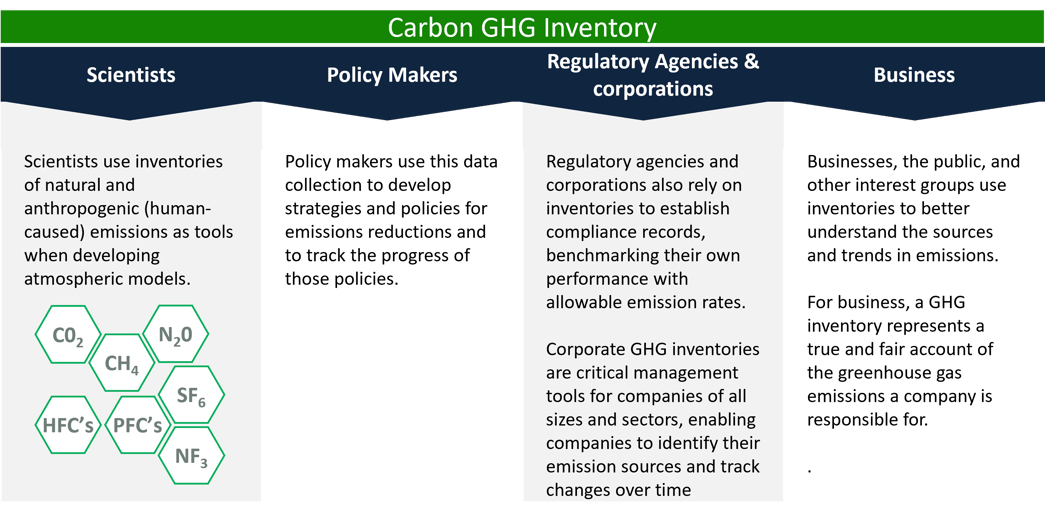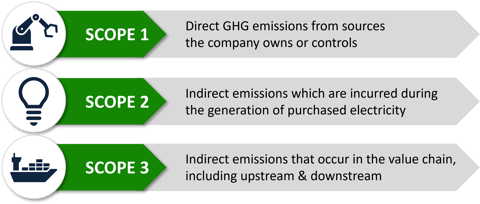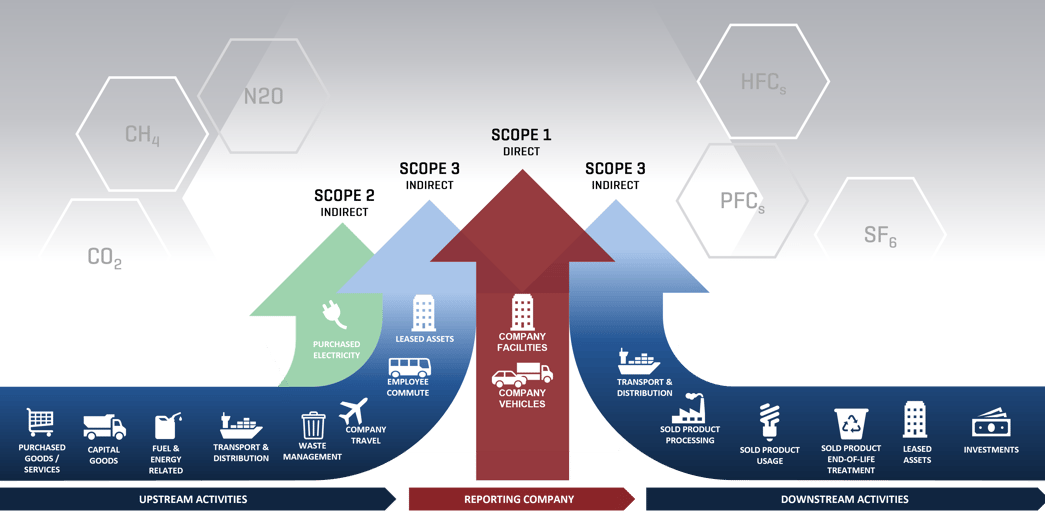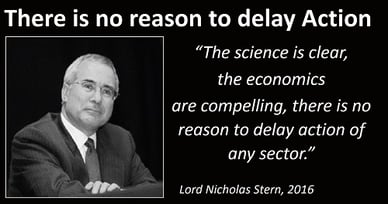The importance of Carbon Reduction!
Significantly reducing our Carbon emissions will impact all Australian businesses in some way or another, requiring a complete rethink in decisions, projects and the way we do business. Investment into renewable energy (solar, wind, hydrogen and battery technology) is increasing.
In line with the Paris Agreement to limit global warming to well below 2 degrees Celsius, preferably to 1.5 degrees Celsius, compared to pre-industrial levels, the Australian Federal Government has committed to achieving a renewables target of 26-28% by 2030 and a Net Zero Carbon Emissions by 2050.
While this may seem a positive step, it may just be a little too late, given that global net emissions needs to drop by 45% from 2010 levels by as early as 2030 for any chance of us meeting the goals set out in the Paris Agreement. Failing to achieve these goals, we may push systems past the tipping point where global warming will continue naturally regardless of any further efforts at reductions.
For a business to understand the quantum of effort required to reduce it’s carbon emissions, it would first need to know what their current emissions are. This is done by developing a Carbon Inventory.
A Carbon Inventory will provide a baseline from which a company can develop a reduction strategy and plan.
In this article we will attempt to provide a clearer understanding of an accurate and verifiable Carbon Inventory, how emissions are quantified, compiled and reported.
It is incumbent on businesses to reduce and manage their carbon emissions, as the federal government appears to be relying on business to come up with new technologies to achieve their stated targets rather than climate action, emissions and removals.
|
According to Grattan Institute Energy Program Director Tony Wood. Rather than forcing big polluters to cut their carbon emissions to reach targets, the Morrison government is hoping that technology can help open the path to reduced emissions and reach those goals. |
Whilst there has been a lot of noise made by the media around the subject of Climate Change, we will expect to see policy makers take on a more serious and mandatory approach as the looming targets approach.
A likely starting point will be a set of minimum compliance requirements rather than a voluntary monitoring reporting scheme. Business will need to develop specific action plans for emission reduction or carbon offset.
But the hard work is only just beginning, after 2030 if Australia genuinely wants to reach net zero emissions by 2050, what it literally means is every tonne of carbon dioxide that has gone into the atmosphere has to be matched by a tonne you take out of the atmosphere. This is done in primarily two ways:
- Reducing the amount of carbon produced that is released into the atmosphere meaning less carbon offsets are required to achieve a net zero impact
- Capturing the Carbon before it gets into the atmosphere (Not discussed in this article)
So the question begs what can be done to reduce our CO2 gas emissions?
We have probably all heard the terms:
- Carbon Credits
- Carbon Stock Assessments
- Greenhouse Gas Inventories
- Carbon Pools
- Paris Agreement - United Nations Framework convention
- Kyoto Protocol
All these terms relate to various methods, and initiatives to mitigate climate change, and a way for business to start understanding carbon life cycles. Once business and consumers understand the impact of their decisions on the environment, we can all start making plans to reduce or eliminate that impact.
What is a Carbon Inventory?
A Nation’s Carbon Inventory is produced each year as part of its obligations under the United Nations Framework Convention on Climate Change (UNFCCC) and the Kyoto Protocol. These inventories are the key source of evidence on greenhouse gas emissions trends. These inventories inform policy recommendations on climate change and enables us to monitor progress towards our emissions reductions targets.
A Carbon Inventory is essentially a quantified list of all items that emit Greenhouse Gas.
Information presented in a GHG inventory can help inform corporate strategies and prioritize actions to reduce emissions, as well as provide benchmarks against which the success of these activities can be measured.
A typical inventory will cover the various ways and sources an organisation releases carbon or consumes products/services that release carbon.
These are then classified across the scope 1-3.

A process of categorising the GHG emissions within each scope is then undertaken.
Nominally the emissions will also be categorised into areas specific to the organisation and it operations.
As a minimum, a GHG inventory records emissions associated with direct GHG, and indirect GHG emissions, these are classified within various scopes:
In its simplest form a Carbon Inventory for an Organisation is a document that records the carbon footprint that a business/project has on the environment.

What is Carbon Inventory Quantification?
Inventory Quantification adopts standard methods for measuring and calculating the GHG emissions attributed to an Organisation. The Intergovernmental Panel on Climate Change (IPCC) provides the world’s most authoritative scientific assessments on climate change and provides guidance for greenhouse gas inventory arrangements and management, data gathering, compilation, and reporting.
The most common used approach is using ISO 14064 which is an international standard for quantifying and reporting greenhouse gas emissions. The standard guides development of a GHG inventory that can be compared to other inventories of other organisations regardless of sector or national origin.
To quantify and report GHG emissions, organisations need data about their activities (for example the quantity and type of fuel used). They can then convert this into information about their emissions (measured in tonnes of CO2-e) using emission factors.
An emission factor allows the estimation of GHG emissions from a unit of available activity data (e.g., litres of fuel used).
The basic calculation used to determine CO2-e is:

This formula applies to the calculation of both CO2-e emissions and individual carbon dioxide, methane and nitrous oxide emissions, with the appropriate emission factors applied for F.
The preferred form of data is in the units that are expressed within emission factor tables, this results in the most accurate emission calculation. If the data cannot be collected in these nominated units, then conversion factors are applied leading to a less accurate quantification.
A basic organisational process map for collecting organisational data for quantification is set out below:

What is a Carbon Inventory Management Plan?
The GHG inventory management plan formalises the data collection, procedures and processes the organisation has adopted and which they will be benchmarked against.
This will also form the basis for the accounting principals and future audits.
A typical Carbon Inventory Management Plan will comprise of the following sections:
- Version Information
- Organisational Information
- Boundary Conditions
- Emissions Quantification
- Uncertainty Assessment
- Data Management
- Base Year
- Management Tools
- Auditing & Verification
What are GHG Accounting Principles?
Similar to financial accounting and reporting principles, GHG accounting principles are intended to underpin and guide GHG accounting and reporting to ensure that the reported information represents a true, and fair account of an organisations GHG emissions.
GHG accounting and reporting practices are continuing to evolve and are relatively new to most businesses. However, the principles listed below are specified in all international standards, specifically ISO14064-1, and are generally accepted and adopted by a wide range of stakeholders in technical, environmental and accounting disciplines.
For more information of the Greenhouse Gas protocol (or GHG protocol) ‘A Corporate Accounting and Reporting Standard” can be found here.
- RELEVANT - Ensure the GHG inventory appropriately reflects the GHG emissions of the company and serves the decision-making needs of users – both internal and external to the company.
- COMPLETENESS - Account for and report on all GHG emission sources and activities within the chosen inventory boundary. Disclose and justify any specific exclusions.
- CONSISTENCY - Use consistent methodologies to allow for meaningful comparisons of emissions over time. Transparently document any changes to the data, inventory boundary, methods, or any other relevant factors in the time series.
- TRANSPARENCY - Address all relevant issues in a factual and coherent manner, based on a clear audit trail. Disclose any relevant assumptions and make appropriate references to the accounting and calculation methodologies and data sources used.
- ACCURACY - Ensure that the quantification of GHG emissions is systematically neither over nor under actual emissions, as far as can be judged, and that uncertainties are reduced as far as practicable. Achieve sufficient accuracy to enable users to make decisions with reasonable assurance as to the integrity of the reported information.
Like financial reporting, it’s not done once and forgotten about, rather the approach is to baseline the first year and then adopt a routine of measuring and monitoring the organisational performance. This allows early detection of any change in carbon footprint early on.
Siecap is accredited to provide, impartial inventory auditing services, in accordance with ISO14065 and the GHG Protocol, Corporate Accounting and Reporting Standard:
- ISO14064-1, design, develop, manage and report on an organisation’s GHG inventory.
- ISO14064-2, Quantify, monitor and report emission reduction and removal enhancement on GHG projects or project based activities.
- ISO14064-3, Specification with guidance for use for the verification and validation of GHG statements

Related Articles
Download a PDF copy of our Carbon Inventory Services Capabilities:



References:
- https://www.environment.gov.au/system/files/resources/f52d7587-8103-49a3-aeb6-651885fa6095/files/summary-australias-2030-emissions-reduction-target.pdf
- https://unfccc.int/process-and-meetings/the-paris-agreement/the-paris-agreement
- https://unfccc.int/kyoto_protocol
- https://www.environment.gov.au/protection/ozone/montreal-protocol
- https://ghgprotocol.org/
- https://ghgprotocol.org/corporate-standard
- IPCC — Intergovernmental Panel on Climate Change
Contact us to enquire about how we can assist you in getting your business ready for carbon emission reduction:
